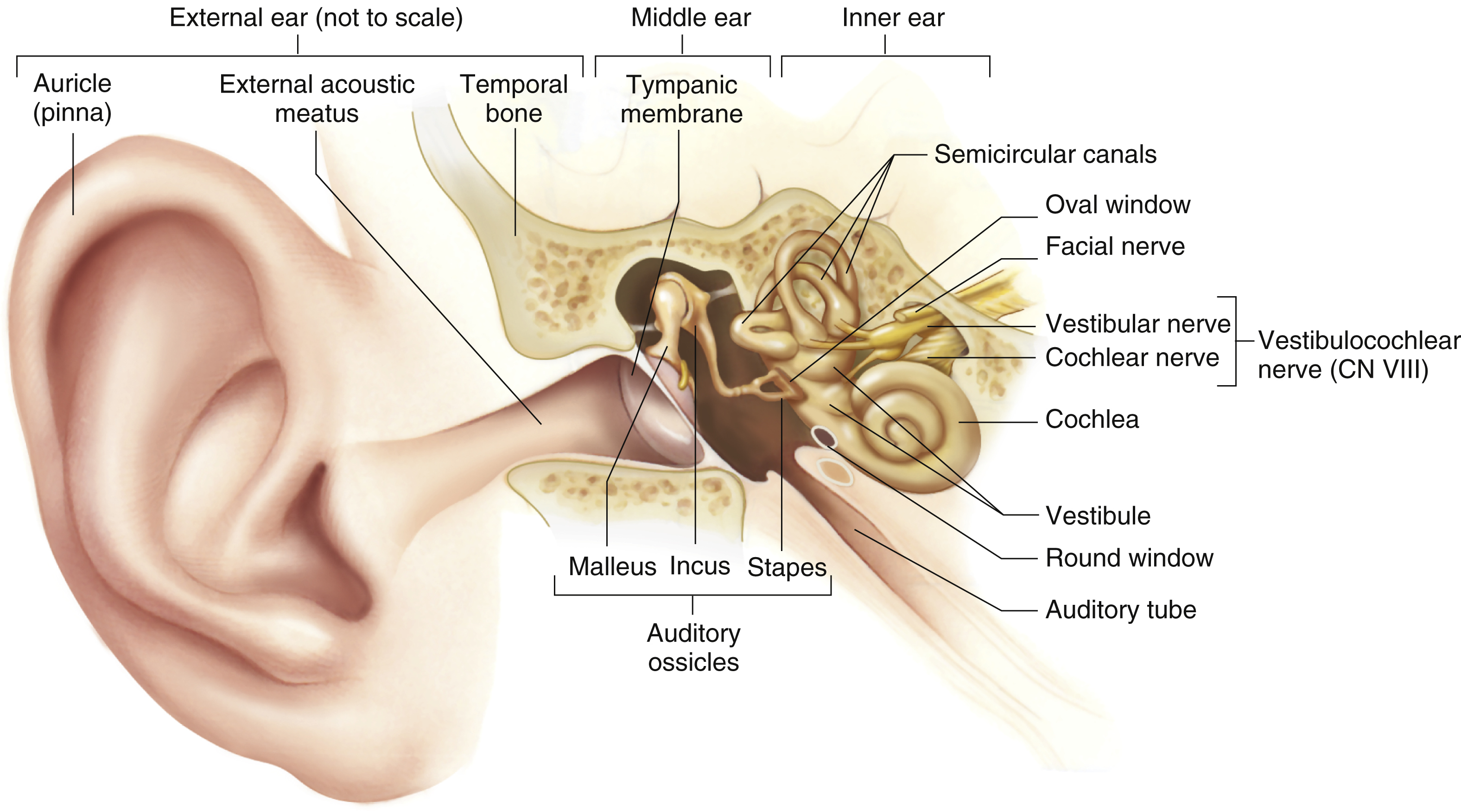ear [AS, eare] , one of two organs of hearing and balance, consisting of the external, middle, and internal ear. The external ear includes the skin-covered cartilaginous auricle visible on either side of the head and the part of the external auditory canal outside the skull. Together they form a funnel that directs sound waves toward the eardrum, or tympanic membrane, which marks the boundary between the external ear and the air-filled middle ear. The middle ear contains three very small bones, the malleus, incus, and stapes, which transmit vibrations caused by sound waves reaching the tympanic membrane to the oval window of the inner ear. The leverage of the ossicles, or middle-ear bones, increases the intensity of sound vibrations by more than 25 dB. Because the inner ear is filled with fluid, the increased intensity helps compensate for the loss of signal normally caused by sound-wave reflection of the fluid. The inner ear contains two separate organs: the vestibular apparatus, which provides the sense of balance, and the cochlea, with the organ of Corti, which receives vibrations from the middle ear and translates them into nerve impulses, which are again interpreted by brain cells as specific sounds.

